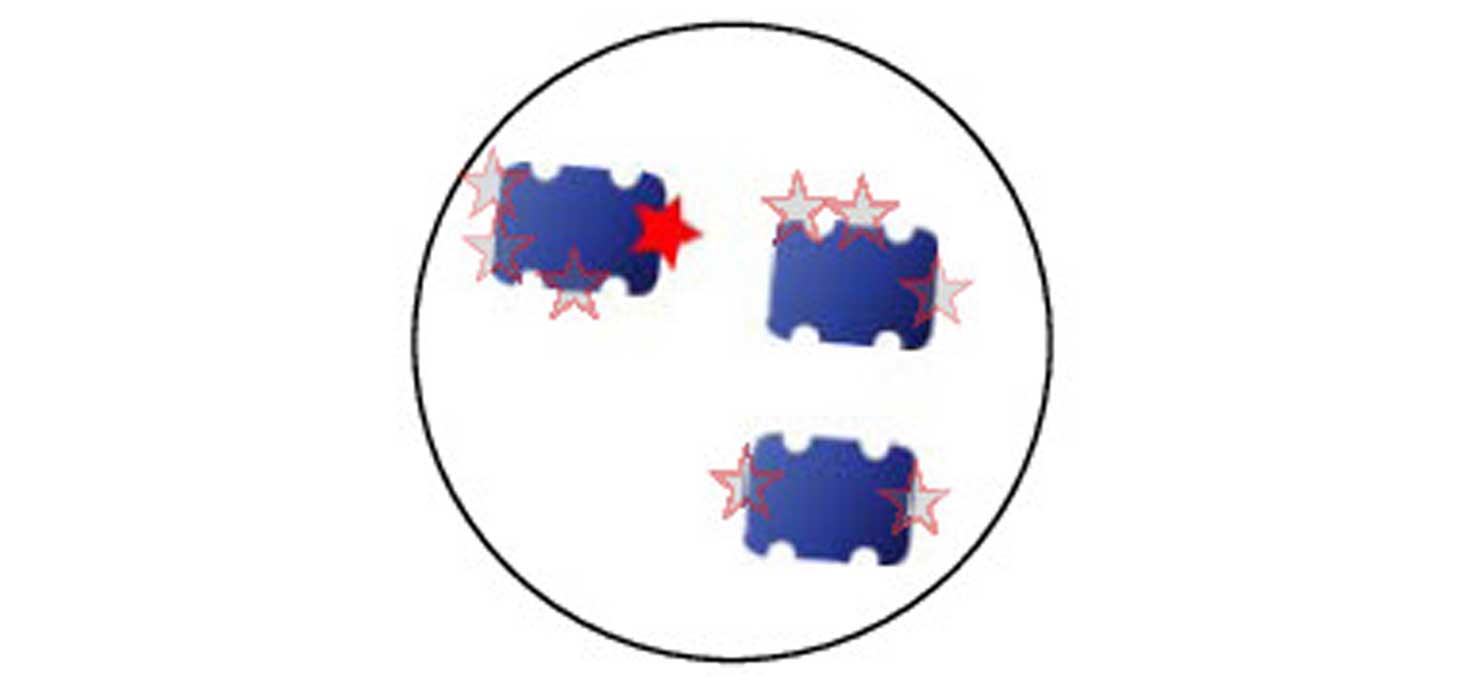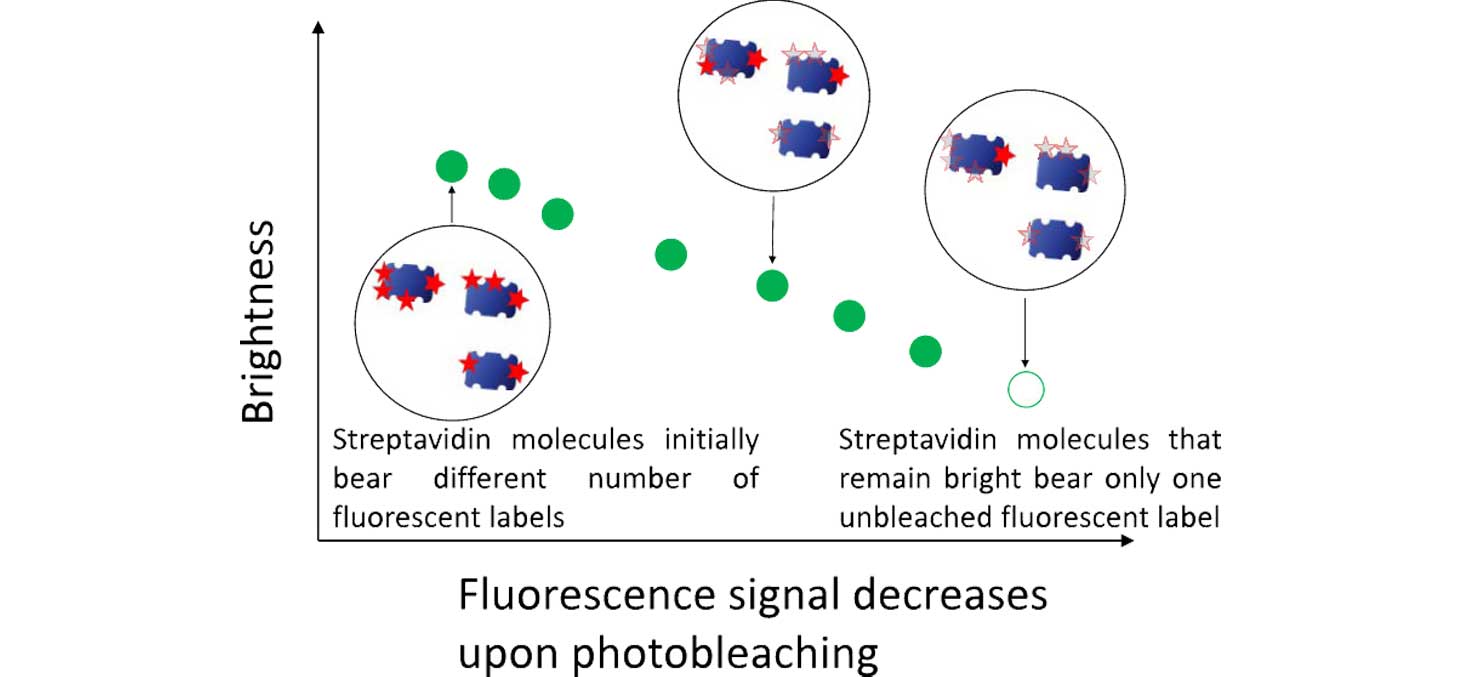- Share
- Share on Facebook
- Share on X
- Share on LinkedIn
Publication / Research
On May 9, 2022

Fluorescence Fluctuation Spectroscopy (FFS) is a widespread technique used to evaluate densities or concentrations of molecules, aggregates or particles in biological environments (cells, solutions, surfaces). In reality, when the species of interest are not uniformly fluorescently labeled, these techniques do not give quantitative results.
We therefore proposed to combine FFS with photobleaching and demonstrated theoretically that, regardless of the initial distribution of individual fluorescent markers on the countable features, the brightness (measured by FFS) always decreases linearly, thus providing two results: the brightness of individual fluorescent markers and a parameter depending on the mean and variance of the distribution of these markers on the countable features. We experimentally demonstrated this new method using a streptavidin monolayer (acting as a host for biomimetic samples) to estimate the surface density of streptavidins and then the density of biotin molecules that bind to them. The density of the streptavidin monolayer estimated with our new method is in excellent agreement with completely independent ellipsometric spectroscopy measurements.

We present a new, self-calibrating method called pbFFS (for photobleaching fluctuation fluorescence spectroscopy) whose objective is to characterize molecules or particles labeled with an unknown distribution of fluorophores. Thanks to photobleaching, which acts as a control parameter, the pbFFS method provides information on the distribution of fluorescent labels and a reliable estimate of the density or absolute concentration of the molecules of interest. We fully demonstrate the principle of the pbFFS method theoretically and also implement it to measure the surface density of a monolayer of fluorescently labeled streptavidin molecules, which is used as a base layer to develop biomimetic systems. The surface density measured by pbFFS is consistent with the results of spectroscopic ellipsometry, a classical surface technique. However, pbFFS has two main advantages: it allows in situ characterization (no dedicated substrate is required) and can be applied to low masses of adsorbed molecules, which we demonstrate here by quantifying the density of biotin-Atto molecules that bind to the streptavidin layer. Finally, we also applied pbFFS to molecules diffusing in solution, in order to confirm the distribution of fluorescent markers found on the surface. In conclusion, pbFFS provides a set of tools to study molecules labeled with a variable number of fluorophores, with the aim of quantifying either the number of molecules or the distribution of fluorescent markers, the latter being particularly relevant for oligomerization studies.
Date
Contact
Antoine DELON
Office 103
antoine.delon univ-grenoble-alpes.fr (antoine[dot]delon[at]univ-grenoble-alpes[dot]fr)
univ-grenoble-alpes.fr (antoine[dot]delon[at]univ-grenoble-alpes[dot]fr)
- Share
- Share on Facebook
- Share on X
- Share on LinkedIn